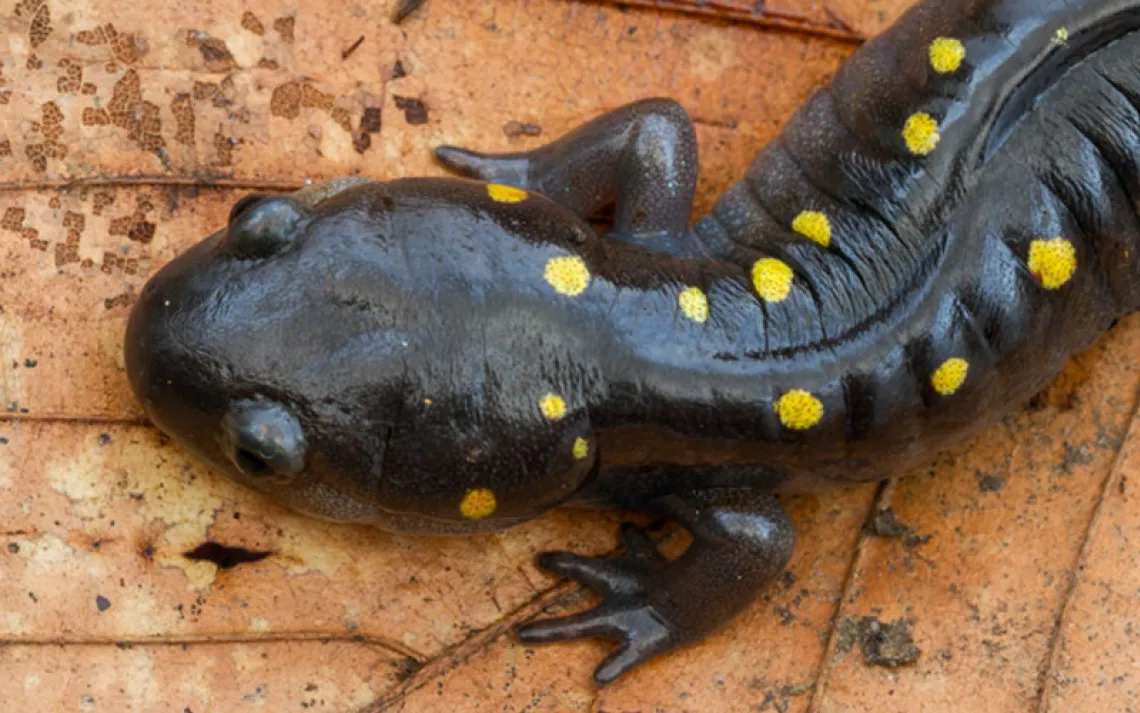“Self-Aware” Fish Raise Questions About Animal Cognition
The four-inch-long cleaner wrasse can pass a test “smart” animals have completed

Photo courtesy of Alex Jordan
For the last few decades, researchers have used a technique called the mirror recognition test to study self-awareness in animals. Self-recognition, it’s believed, only occurs in animals with a little extra cognitive power, and thus far, studies have borne that out. While dozens of bright animals including monkey species, dogs, crows, and octopuses have failed to recognize themselves, others including primates like humans, chimps, orangutans, as well as dolphins, magpies, killer whales, and one Asiatic elephant have demonstrated self-awareness through the test, at least according to some interpretations.
But a new paper in the journal PLOS appears to show that a four-inch-long tropical fish species called Labroides dimidiatus, or the bluestreak cleaner wrasse, can also pass the test, calling into question just what self-awareness means about cognitive capacity.
The mirror test was first developed in the 1970s by evolutionary psychologist Gordon Gallup Jr., now at the State University of New York in Albany. In the test, an animal is anesthetized before a mark is placed on its body in an area it can’t readily see without using a mirror. The animal is then placed in front of the reflective surface. In most cases, animal species perceive their reflection in the mirror as another individual and either become defensive or flee or simply ignore it. But a small subset of animals recognize the mirror image as themselves and examine the mark in the mirror and touch it or interact with it.
Alex Jordan, a researcher at the Max Planck Institute of Ornithology and the University of Konstanz in Germany, studies the evolution of social behavior at his lab, concentrating on the hundreds of species of cichlid fish that have evolved in the African Great Lakes. As a postdoc in Japan in 2013, Jordan and his collaborators decided to put the cichlids through the mirror test. Not surprisingly, the fish did not pass the test in early investigations, and a more comprehensive study by Jordan’s collaborators in 2017 confirmed that.
But the exercise led Jordan and his colleagues to begin thinking more deeply about the mirror test and what it really reveals about an animal: “[If an animal doesn’t] pass this test, it could be they can’t,” Jordan says. “Or it could be they simply don’t care. And this is a real problem, because we have this test they designed for humans initially and then chimps that sort of feeds into the sensory umwelt [world of experience] of those species and our interpretable bias. We’d want to get something off our face. But maybe animals, they see a mark, they know it’s on their face, but they say, 'Oh well, so be it; it doesn’t bother me.' And that’s a very difficult thing to distinguish.”
To assess if a fish could pass the mirror test, Jordan and his colleagues reasoned, the animal would have to be interested in getting any perceived mark off its body. And they had just the candidate: the bluestreak cleaner wrasse, a highly social tropical fish species that spends its life looking for marks on the bodies of other fish and cleaning off parasites. If the wrasse had some modicum of self-awareness and notices a mark on its body, Jordan and his team thought, it would likely feel compelled to remove the mark.
Indeed, when they placed a colored mark on the body of the wrasse in a spot that could only be seen using the mirror, the fish investigated the mark, scraping its body against objects to try to remove it and swimming upside down. When a colored mark was applied but no mirror was present, the fish did not react, and when a transparent mark was applied and the mirror was present, the fish did not react either, which the team argues, means it’s unlikely the fish was reacting to an irritation created by the dye mark. Instead, the researchers suggest the most likely scenario is that the fish recognized the image in the mirror as itself and took action to remove the mark.
The result, Jordan says, does not mean the cleaner wrasse gets to join the pantheon of Earth’s smartest animals. “The fact that the cleaner wrasse passes the test doesn’t tell us they are as intelligent as a chimp,” Jordan says. “But it also doesn’t allow us to distinguish between the chimp and fish using this test. My conclusion is that it’s well and truly possible chimps are self-conscious, but this test does not allow us to make that claim unequivocally, especially not when we begin to extend it out to animals with which we have lower understanding or intuition of their motivational states.”
Instead, he says, the test proves that at a minimum, the fish understands what the mirror does. It does not prove or disprove self-awareness.
The study is expectedly controversial, especially since it calls into question decades of work on animal self-awareness and criticizes its gold-standard test. A critique published alongside the study by well-known primate researcher Frans de Waal says the interpretation of the study does not make it clear that the fish passed the mirror test. Instead, he says, the scraping action by the fish could have been a response to seeing what they believed was another fish with a parasite on its body, which led them to start scraping themselves (similar to the way people start itching when they see a tick on someone else). He also notes that the color mark injected into the fish could be irritating and that there are examples where monkeys pass the mirror test only after connecting the pain or irritation with a visual cue in the mirror.
While de Waal disputes the interpretation, he also argues that the mirror-recognition test may be inadequate to assess consciousness in animals. It seems to test for a consciousness “Big Bang,” he writes, in which an animal is either self-aware or not self-aware, with no states in between. “What if self-awareness develops like an onion, building layer upon layer, rather than appearing all at once?” he writes. Different animals with different lifestyles, he says, need different levels of self-awareness. “Therefore, to explore self-awareness further, we should stop looking at responses to the mirror as the litmus test.”
Jordan says he does not disagree with de Waal’s criticism of the mirror test, but says the onion analogy is too linear. Self-awareness, he says, likely doesn’t develop in discrete stages, but is probably as messy as evolution, developing in different levels and via various pathways in animal species.
 The Magazine of The Sierra Club
The Magazine of The Sierra Club



